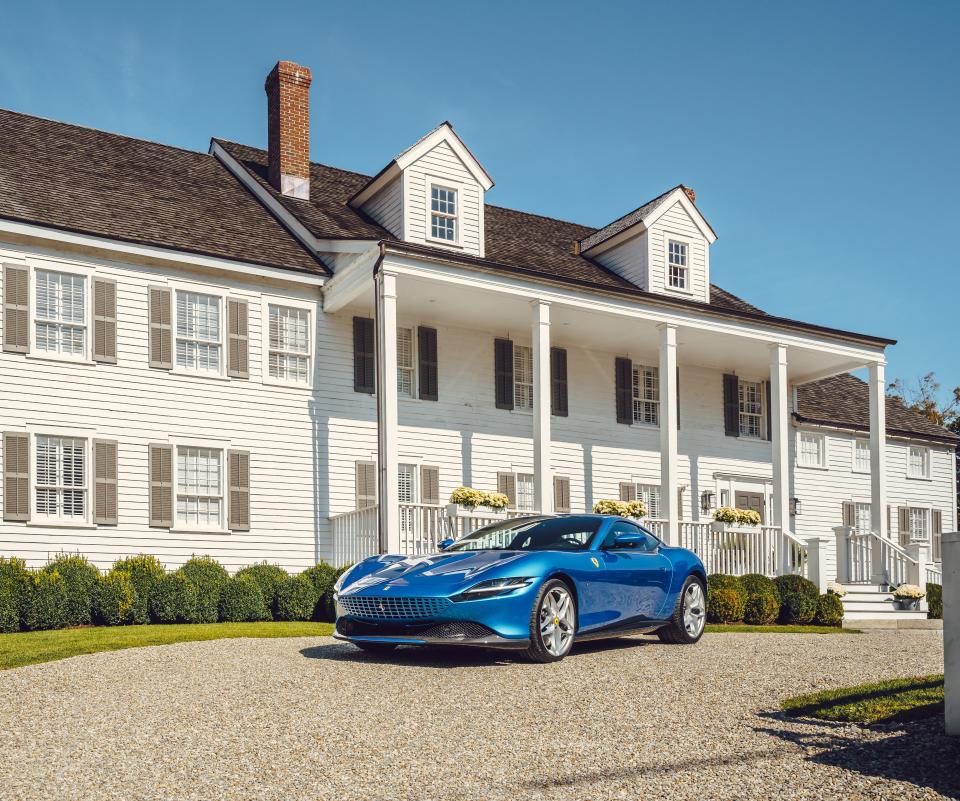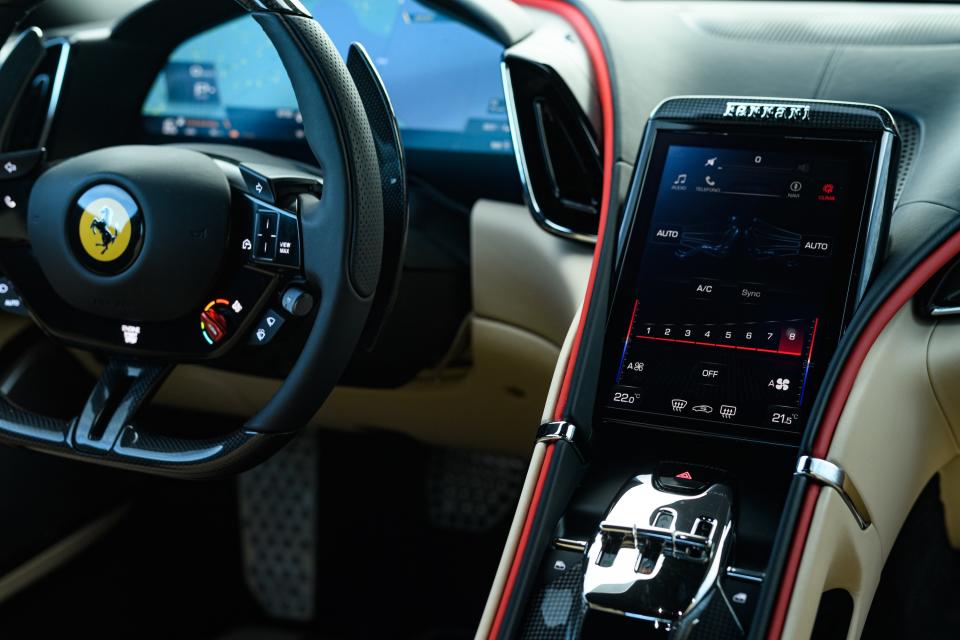What Went Into Designing the Gorgeous New $223,000 Ferrari Roma
Though Ferrari has stated that its gorgeous new $223,000 Roma grand touring (GT) car is all about “understatement,” during our recent test drive, the electric blue sports coupe attracted plenty of attention. Perhaps it had something to do with our driving style, which errs toward the obstreperous, running the car’s 612 horsepower V-8 out to its 7,500 r.p.m. redline, relishing the roar and cackle of the exhaust. Or maybe it was simply our unsettling intrusion into the tony Connecticut waterfront suburbs. Our parking job, smack in the middle of the lot at the local public beach, was certainly an overstatement, as everyone who came out for that perfect fall Saturday noted.
Behind the wheel of something so stunning, we didn’t mind all the scrutiny. But it got us wondering why this new Ferrari was so classically beautiful. So we called the brand’s chief design officer, Flavio Manzoni.
“When we started the project, the idea was basically to redefine the criteria of Ferrari design regarding GT cars,” Manzoni says. “Because, in the recent years, the increasing complexity and technology of our cars was influencing the shape and the design. So it was very important to clarify the difference between a car like the SF90 Stradale [hybrid supercar], which has a very extreme shape due to the power and the performance and aerodynamic level, and a car like the Roma, where the performance is not necessarily the first priority. It is more important to have a very elegant and sophisticated appearance and design.”

The Roma is certainly no slouch in the performance department, blasting from 0-60 m.p.h. in 3.2 seconds en route to a 199 m.p.h. top speed. But it excels in appearance and elegance. Much of this derives from its connection to Ferrari heritage, what Manzoni calls “the DNA of the brand—the formal language, the vocabulary of Ferrari.”
On the Roma, these include a modern and very slender interpretation of the classic Ferrari twin-taillights, and a fresh version of the blunt Coda Tronca or Kamm Tail rear end. But it’s the overall silhouette—long slanting hood, powerful and curvaceous fenders, and a fluidly tapered cabin—that recall glorious Ferrari GTs from the mid-20th century like the 250 GT Lusso, 275 GTB, and 365 GTB/4 “Daytona.”
This is no accident. The tag line of the Roma is La Nuova Dolce Vita, and it is meant, very overtly, to reference this Mid-Mod moment when the artistic influence of Italy—in housewares, furniture, fashion, architecture, music, movies, and cars—seemed ubiquitous and dominant. “In my opinion, the Dolce Vita somehow epitomizes an incredible period where stile Italiano became famous all over the world,” says Manzoni. “In the 70s the MOMA did a fantastic exhibition about Italian design. So we can imagine how strong has been the impact.”

Yet, despite its strong exterior allusions to the past, the Roma’s interior is markedly contemporary, with a brand new HMI—Human Machine Interface—that includes a crisp LCD screen in the instrument panel that can be adjusted by the driver via capacitive touch sensors on the steering wheel, a shared touch-screen in the center console, and a third touch-screen in front of the passenger. “It started with the idea of driving the car with the hands on the steering wheel and the eyes on the road,” Manzoni says, a statement that bears repeating in these days of constant distraction. “But instead of developing only a driver orientation, we decided to create two cockpits, to involve the passenger, who actually can become a kind of co-pilot.”
The system kept both occupants engaged on our trip. As we pulled away from the beach after our picnic, our passenger adjusted the climate control, entered our destination into the navigation system, and cranked up Whitney Houston to energize us for the drive back to New York. The driver did his part as well. Hands on the wheel, eyes on the road, he put his foot deep in the gas pedal and let the Roma do what it does best. Roaringly transport two people through a glorious escape.
Originally Appeared on Architectural Digest

